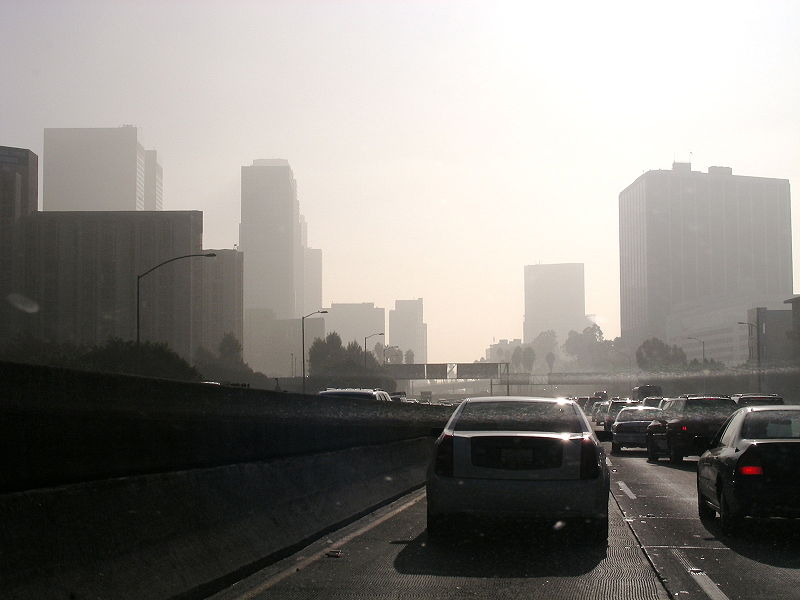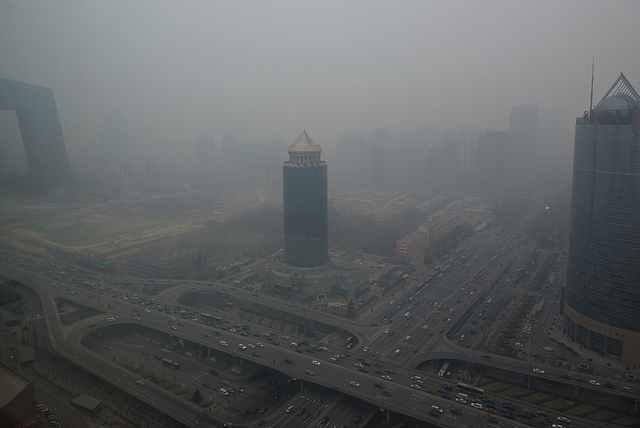Atmospheric fine particle mass mostly originates from emissions from motor vehicles, wildfires and other combustion processes. When emissions are exposed to oxidants and sunlight, they evolve chemically and physically to generate secondary particulate matter. Dr. Allen L. Robinson, Head of the Department of Mechanical Engineering at Carnegie Mellon University, shared results from their investigations of atmospheric evolution of emissions at the SOCAAR Seminar on February 1, 2017. Continue reading
Tag Archives: traffic
Sources of Fossil Fuel and Biomass Burning Black Carbon in Ontario

Source: Toronto Star
Black carbon (BC) particles are generated through incomplete combustion processes including combustion of fossil fuels and biomass. These two sources are most commonly from vehicles and residential wood burning for heating. BC has an overall warming effect on the global climate and long-term exposure to it has been associated with cardiopulmonary mortality.
Dr. Robert Healy, Senior Environmental Officer at The Ontario Ministry of the Environment and Climate Change, spoke about the Ministry’s work on assessing the sources of fossil fuel and biomass burning black carbon in Ontario at the SOCAAR Seminar on November 30th, 2016. Continue reading
Investigating the Role of Transportation Models in Epidemiologic Studies of Traffic Related Air Pollution and Health Effects
It’s widely known that traffic related air pollution is associated with long-term health effects like cancers, cardiovascular or respiratory illnesses. But there’s more that could be learned about the short-term exposure to traffic-related air pollution. In the first SOCAAR Seminar for 2015-16, Marianne Hatzopoulou, Associate Professor in the Department of Civil Engineering at the University of Toronto discussed the application of transportation and emission models to investigate air pollution in the city of Montreal. The main research questions presented were: i) How can we improve measures of exposure? ii) What is the role of integrated transportation-dispersion models? Can transportation models replace atmospheric dispersion modelling? Continue reading
Near-road measurement of traffic-related pollutants

Photo Source: Wikipedia user Aliamizi
Traffic related pollutants were officially classified as carcinogenic by the World Health Organization in 2013. For the many Canadians that live or work near roadways, this could be a risk factor which may negatively impact their health.
Dr. Cheol-Heon Jeong and Jon Wang, both of UofT’s Department of Chemical Engineering and Applied Chemistry, say the concentration of traffic-related pollutants varies with distance from the road; where significant pollution can be detected up to 250 metres from the road. Continue reading
CAREBEIJING progresses air pollution control measures in Beijing

Beijing as seen through the recent smog episode. (Photo credit Flickr user: Infinite Jeff)
The severe air pollution in China’s capital, Beijing, has made the news around the world these past two months, with many wondering what was causing the smog. Professor Tong Zhu, of Peking University’s College of Environmental Sciences and Engineering in Beijing, delivered a special SOCAAR Seminar addressing the recent air pollution episode. He also highlighted steps that could be taken to improve the air quality in Beijing and the surrounding North China Plain. Continue reading
Human exposure studies investigate response pathways to air pollution
Air pollution is often linked to adverse effects on respiratory health but it can have even stronger ties to cardiovascular health issues. In the first SOCAAR Seminar of 2013, Drs. Krystal Godri Pollitt and Bruce Urch discuss their findings from a number of recent human exposure studies looking at the effects of particulate matter (PM) exposure on cardiovascular health.
A number of studies over the last 10-20 years have found pollutant exposure has led to increases in cardiovascular related illness or death. But the mechanisms of the body’s response to exposure is still unclear. The research presented aims to improve the understanding of the response pathways to PM exposure, information which could ultimately be used to improve the air quality policies that are implemented. Continue reading
Evans Research Group presents at AAAR 2012 Conference
The Evans Research Group attended the American Association for Aerosol Research (AAAR) 31st Annual Conference on October 8-12 in Minneapolis, USA. Congratulations to Josephine Cooper on winning the student poster competition at the conference! Continue reading
